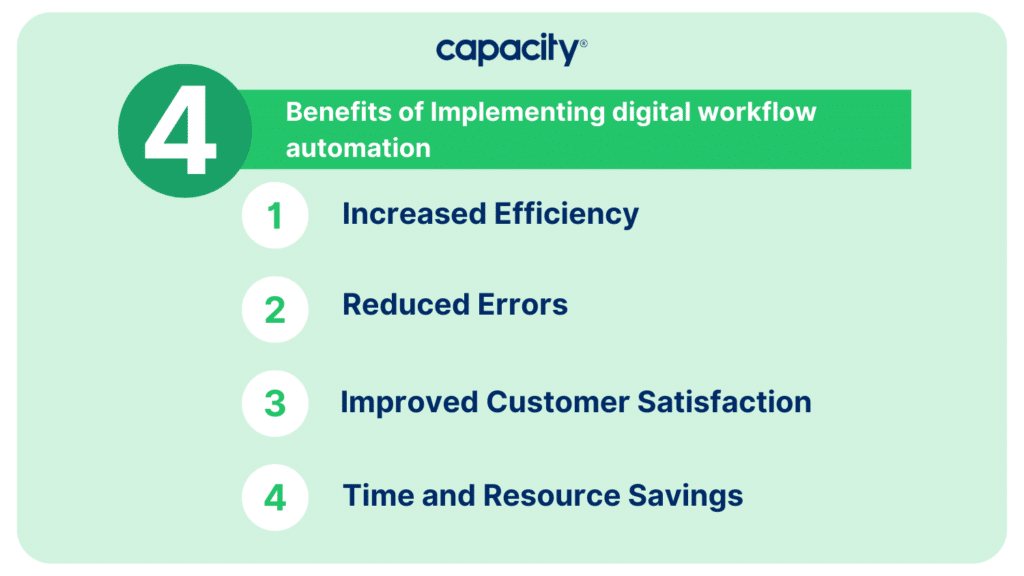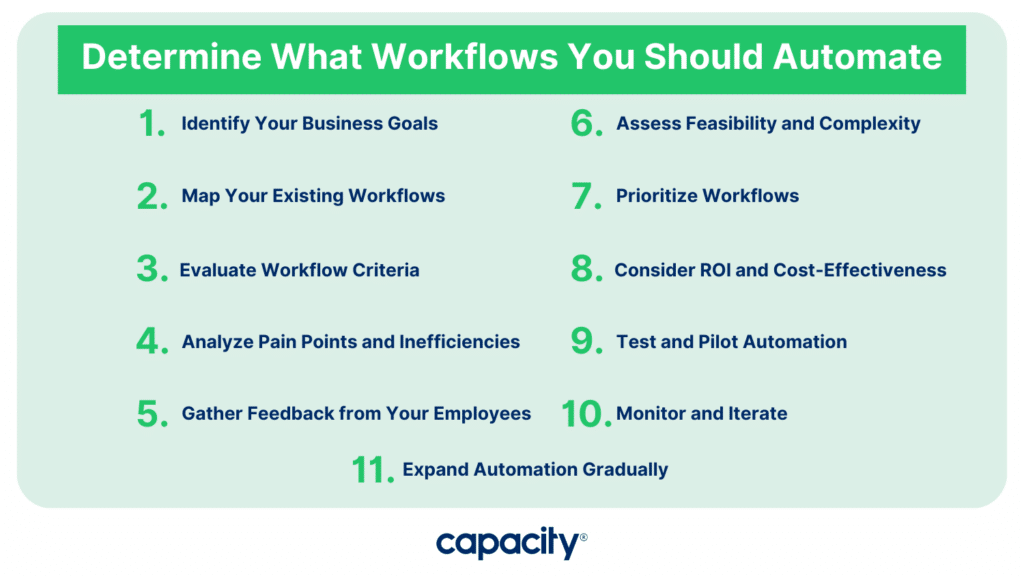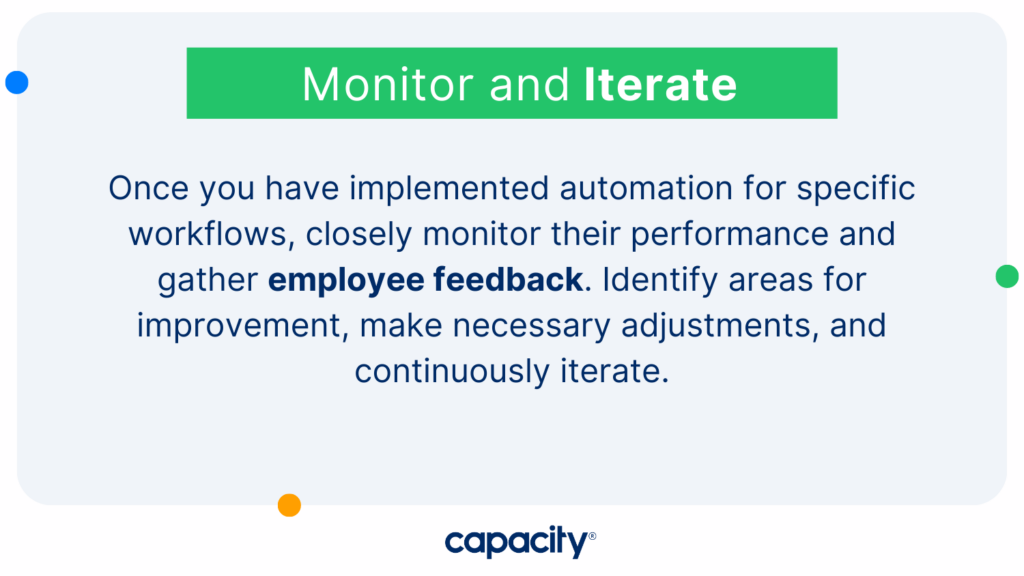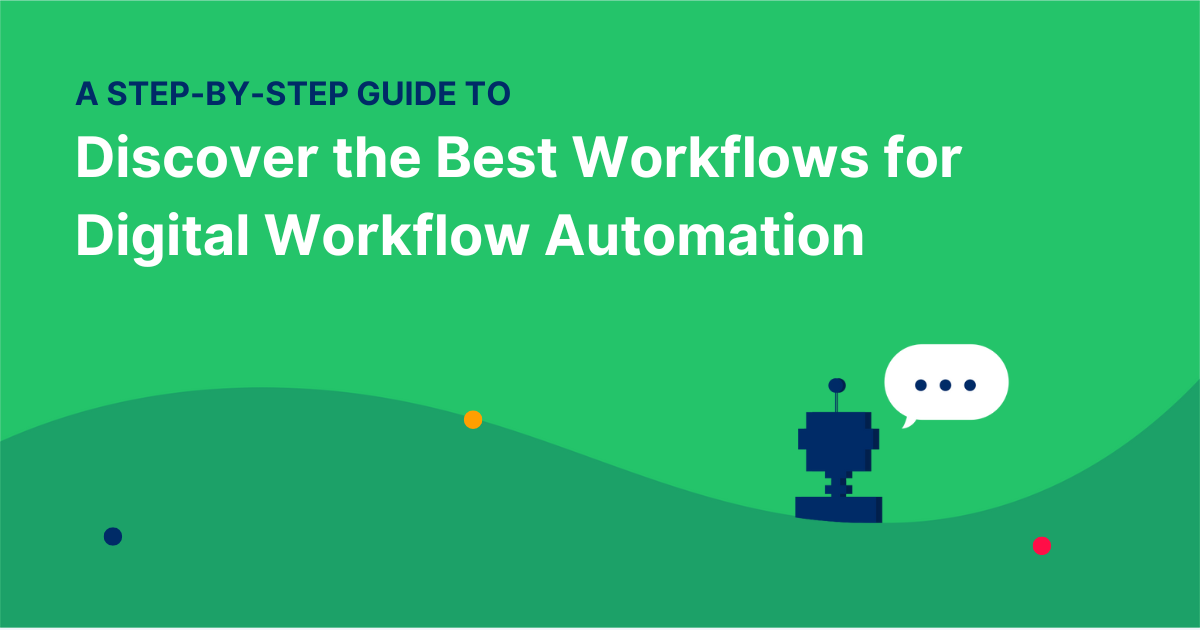Automation has become a crucial aspect of modern business operations, streamlining processes, increasing efficiency, and driving overall productivity. For operations leaders and IT management, identifying the right workflows to automate is a strategic decision that can have a significant impact on the success of their organizations. So, in this step-by-step guide, we will explore how you can determine the best workflows for digital workflow automation, enabling you to achieve your business goals effectively.
What is Digital Workflow Automation and Why Should You Care?
Digital workflow automation involves the use of technology to streamline and optimize repetitive, manual tasks, decision-making processes, and information flows within an organization. When you add digital workflow automation, your business can reduce errors, improve operational efficiency, and enhance customer satisfaction by automating workflows. In fact, workflow automation can save companies anywhere from $10,000 to millions per year. The average company saves $46,000 annually.
Implementing digital workflow automation offers numerous benefits, such as:

- Increased Efficiency: Automation eliminates the need for manual, time-consuming tasks, enabling employees to focus on more valuable and strategic activities.
- Reduced Errors: Manual processes are prone to human errors, which can have significant consequences. Automation minimizes the risk of errors and ensures consistency in workflow execution.
- Improved Customer Satisfaction: Automation allows businesses to provide faster response times, streamline customer interactions, and deliver a more seamless experience.
- Time and Resource Savings: Automating workflows frees up valuable time and resources, enabling organizations to allocate them to other critical areas of their operations.
Now that we understand the importance of digital workflow automation, let’s dive into the step-by-step process of determining which workflows you should automate.
Step-by-Step: How to Determine What Workflows You Should Automate

Step 1: Identify Your Business Goals
The first step in determining the workflows to automate is to clarify your business goals and objectives. Consider what you want to achieve through digital workflow automation, such as increasing efficiency, reducing errors, improving customer satisfaction, or saving time and resources. When you align automation with your strategic goals, you can prioritize the workflows that will have the most significant impact on your organization.
Step 2: Map Your Existing Workflows
Creating a visual map or diagram of your current workflows is essential to gain a comprehensive understanding of your operational processes. Identify each step, decision point, and the individuals involved in each process. This exercise will help you uncover the complexity and bottlenecks within your existing workflows, providing valuable insights for automation opportunities.
Step 3: Evaluate Workflow Criteria
Define specific criteria to evaluate the suitability of each workflow for automation. Consider factors such as the frequency of the workflow, the volume of tasks involved, the level of human intervention required, the potential for errors, and the impact on overall business performance. 32% of companies experienced less human error after adopting workflow automation, which increased their overall productivity, efficiency, and accuracy. This evaluation will help you prioritize the workflows that are most suitable for automation.
Step 4: Analyze Pain Points and Inefficiencies
Identify pain points and areas of inefficiency within your existing workflows. Look for repetitive tasks, manual data entry, excessive reliance on paper-based processes, lengthy approval cycles, or any other bottlenecks that slow down operations. These pain points are ideal candidates for automation, as they can lead to significant improvements in productivity and accuracy.
Step 5: Gather Feedback from Your Employees
To ensure successful adoption and integration of automated workflows, it is crucial to involve your employees in the process. Seek their feedback to gain insights into the challenges they face with the current workflows. Ask questions such as:

- What aspects of the current workflow do employees dislike?
- What causes difficulties or delays in the existing process?
- Where do employees notice the most errors occurring?
- What improvements would make their jobs easier?
You can address their concerns and create workflows that better suit their needs, driving higher levels of acceptance and engagement by involving your employees in the decision-making process.
Step 6: Assess Feasibility and Complexity
Evaluate the feasibility of automating each workflow. Consider the availability of digital tools and technologies, the compatibility of existing systems, and the level of complexity involved in automating specific tasks or decision-making processes. This assessment will help you determine the practicality and potential challenges of automating each workflow.
Step 7: Prioritize Workflows
Based on the impact on your business goals and the level of inefficiency or pain they currently cause, prioritize the workflows for automation. Focus on workflows that are highly repetitive, time-consuming, error-prone, or critical to your operations. By prioritizing the most impactful workflows, you can maximize the benefits of automation while minimizing disruption to your organization.
Step 8: Consider ROI and Cost-Effectiveness
Analyze the potential return on investment (ROI) of automating each workflow. Consider the cost of implementing automation tools, the expected time savings, reduction in errors, improved productivity, and the long-term benefits of streamlined processes. This evaluation will help you make informed decisions and allocate resources effectively.
Step 9: Test and Pilot Automation
Select a few high-priority workflows and conduct pilot tests using digital workflow automation tools. This approach allows you to assess the effectiveness, user experience, and scalability of the automation solution before implementing it across your entire business. You can refine the automation process and address any unforeseen challenges or issues by testing and iterating.
Step 10: Monitor and Iterate

Once you have implemented automation for specific workflows, closely monitor their performance and gather employee feedback. Identify areas for improvement, make necessary adjustments, and continuously iterate to optimize the automated workflows. Regular monitoring and evaluation will ensure that automation continues to deliver the desired results and aligns with evolving business needs.
Step 11: Expand Automation Gradually
As you gain confidence and success with automated workflows, gradually expand automation to other processes in your business. Prioritize based on impact and feasibility, and provide proper training and support to employees who will be using the new automated tools. You can manage change effectively and ensure a smooth transition to streamlined operations by testing and iterating.
Digital workflow automation has the potential to revolutionize the way organizations operate, enhancing efficiency, reducing errors, and driving overall performance. Follow this step-by-step guide and operations leaders and IT management can identify the most suitable workflows for automation, align them with business goals, and achieve significant improvements in productivity and customer satisfaction. Embrace the power of automation and unlock new possibilities for your organization’s success.

Automate Your Work
Capacity’s enterprise AI chatbot can help:
- Answer FAQs anytime, anywhere
- Find relevant documents within seconds
- Give surveys and collect feedback





